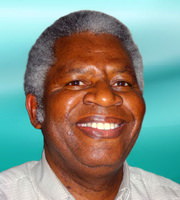
by Tammy Fields
Feeling depressed? Maybe you should have all of your teeth extracted. If that doesn’t work, you can try spinning in circles. While modern psychiatry has its critics, current treatment methods are certainly preferable to those of yore. Here are five weird therapy techniques that you’ll need a time machine to undergo.
Coma Therapy
Many scientific breakthroughs have been discovered by accident. In 1927, when Dr. Manfred Sakel administered too much insulin to one of his diabetic patients, he mistakenly sent her into a coma. Upon waking, the patient, who was also a morphine addict, felt no craving for her drug of choice. Of course, all experiments must be repeatable to produce valid results, and Dr. Sakel fortunately made the same mistake with another patient resulting in the same outcome. After that, Dr. Sakel began intentionally inducing comas to treat drug addiction. Dr. Sakel’s off-beat method purportedly had a 90 percent cure-rate, though no data are available for 2 percent of hispatients; they died during therapy.
Hydrotherapy
Most people agree that a warm bath can relax the mind and body after a long day, but hydrotherapy has more in common with water-boarding than bathing. Doctors once treated hyperactivity by restraining patients in scorching water for days on end. For lethargic patients, ice baths and high-pressure jets were the preferred treatment. These days, most doctors will probably just recommend a quick shower to achieve the same results.
Surgical Bacteriology
Until relatively recently, mental anguish was attributed to either demonic possession or undiagnosed bacterial maladies within the body. Dr. Henry Cotton bought into the latter theory, and he had a commonsense solution: remove parts of his patients’ bodies until they were cured. He’d start by extracting his clients’ teeth. Not one to give up, if patients still experienced symptoms after dental work, he’d remove tonsils, gall bladders, cervixes, testicles and even stomachs. Ironically, his practices were discontinued because many of his patients died from bacterial infections due to unsterile surgical procedures.
Rotational Therapy
Benjamin Rush’s contributions to the field of psychology are invaluable. He authored the first notable textbook on mental disorders in the United States and was a strong advocate for patients’ rights in a time that people with mental disorders were treated inhumanely. As an alternative to exorcisms and organ removal, Rush suggested strapping patients to a board and spinning them around. While the only side-effect of Rush’s procedure was dizziness, it failed to produce desirable results in psychiatric patients; however, rotational therapy is currently used to treat respiratory illnesses.
Mesmerism
Have you ever wondered where the word “mesmerize” comes from? Dr. Franz Mesmer believed that the moon’s gravity manipulated body fluids in the same way it affects the ocean’s tides. Naturally, he also believed that magnets could balance out the moon’s gravitational pull. Though most psychiatrists of the day attributed his success to the placebo effect, Dr. Mesmer had hundreds of satisfied patients. Mesmer eventually proved his colleagues right; he found that laying his hands on his patients and telling them that he was feeding them a magnetic charge made his patients feel just as good. It should be noted that most of Mesmer’s patients were young women. Despite his critics, Mesmer’s ideas were foundational to the field of hypnosis, hence the synonym “mesmerism”.
Image Credit: Soren Martin & Mark Andersen

















